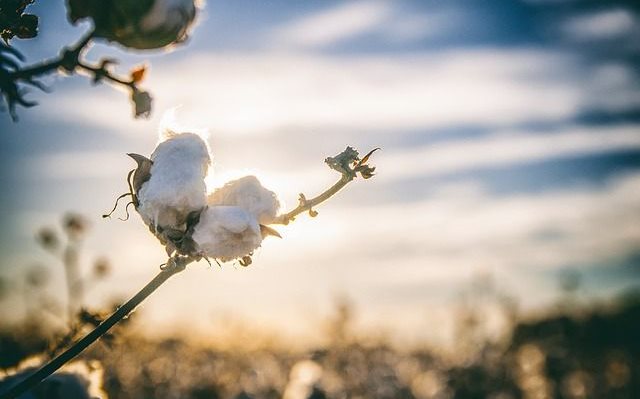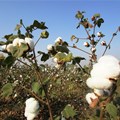
Subscribe & Follow
Advertise your job vacancies
Covid-19's effect on global cotton trends
Cotton is one of the most significant poverty-alleviating crops in the world. Approximately 150 million people around the globe rely on it for some, if not all, of their income. According to Kai Hughes, executive director at the International Cotton Advisory Committee (ICAC), cotton provides a lifeline in developing countries as it can grow where other plants often cannot and it can be stored without the risk of deterioration.
During a webinar Cotton SA recently hosted on World Cotton Day, Kai Hughes, executive director at the International Cotton Advisory Committee (ICAC) elaborated on the effect Covid-19 has on global cotton trends.
During a webinar Cotton SA recently hosted on World Cotton Day, Kai Hughes, executive director at the International Cotton Advisory Committee (ICAC) elaborated on the effect Covid-19 has on global cotton trends.

bobbycrim via Pixabay
Covid-19 has reminded us all how fragile our environment is. This is an important factor to consider because unlike its synthetic competitors, cotton does not pollute water and air with trillions of microplastics every year. "Cotton is natural, so it biodegrades and returns its nutrients to the soil, whereas plastic will remain in water sources and affect wildlife for thousands of years.
"When combined with the inevitable challenges that climate change brings to our planet, it is evident that natural fibres, such as cotton, will have a critical role to play in the future of feeding and clothing the world, without destroying it in the process. Furthermore, cotton is such an important natural fibre that touches the lives of millions of people each day, which is why it is important to celebrate the communities that produce it," he explained.
World Cotton Day not only allows us to celebrate this diverse fibre but also to highlight its global importance to so many economies around the world. By celebrating cotton, we also help to stimulate more demand for cotton and cotton-based products.
According to Hughes, one of the advantages of the ICAC is the committee’s global perspective on the cotton and textile trade. "We are also running projects to increase yields and sustainability. It’s this global perspective that allows us to produce information on global trends," he added.
Covid-19’s effect on global cotton production and demand
In 2019/20 global production increased by nearly 2% to 26,2 million tonnes, which made it the second-largest production year in the last five years. India was the largest producer in 2019/20 with 6,2 million tonnes, followed by China, the United States (US), Brazil and Pakistan. Those top five producing countries accounted for nearly 80% of the total world production.
The cotton production forecast for 2021 is projected at 25,1 million tonnes, which is a 4,2% decrease from the previous season. However, world cotton consumption is estimated to have fallen sharply by 12,7% in 2019/20. "This unprecedented decrease was driven by the rapidly developing impact of Covid-19 and the lockdown measures implemented by countries around the world to try to stop the spread of the virus," explained Hughes.
China and India dominate cotton consumption, consuming little over half of the world’s cotton. Consumption of the commodity is expected to recover by 7,2% in 2021 to approximately 24,3 million tonnes, but only if projected global economic growth materialises and economic activity increases. "This is only likely to take effect when a vaccine against Covid-19 can be distributed and applied on a global scale," he said.
A closing thought
While Covid-19 and its effects cause devastation, it is not the first financial crisis the cotton industry has experienced within the past two decades. In previous years whenever the industry encountered financial difficulty, cotton consumption recovered.
This time, however, we predict that the recovery will take many months to normalise and it will be highly dependent on the release of a vaccine. "We should start putting together strategies that will affect an increase in the demand for cotton," concluded Hughes.
Source: AgriOrbit

AgriOrbit is a product of Centurion-based agricultural magazine publisher Plaas Media. Plaas Media is an independent agricultural media house. It is the only South African agricultural media house to offer a true 360-degree media offering to role-players in agriculture. Its entire portfolio is based on sound content of a scientific and semi-scientific nature.
Go to: http://agriorbit.com/






